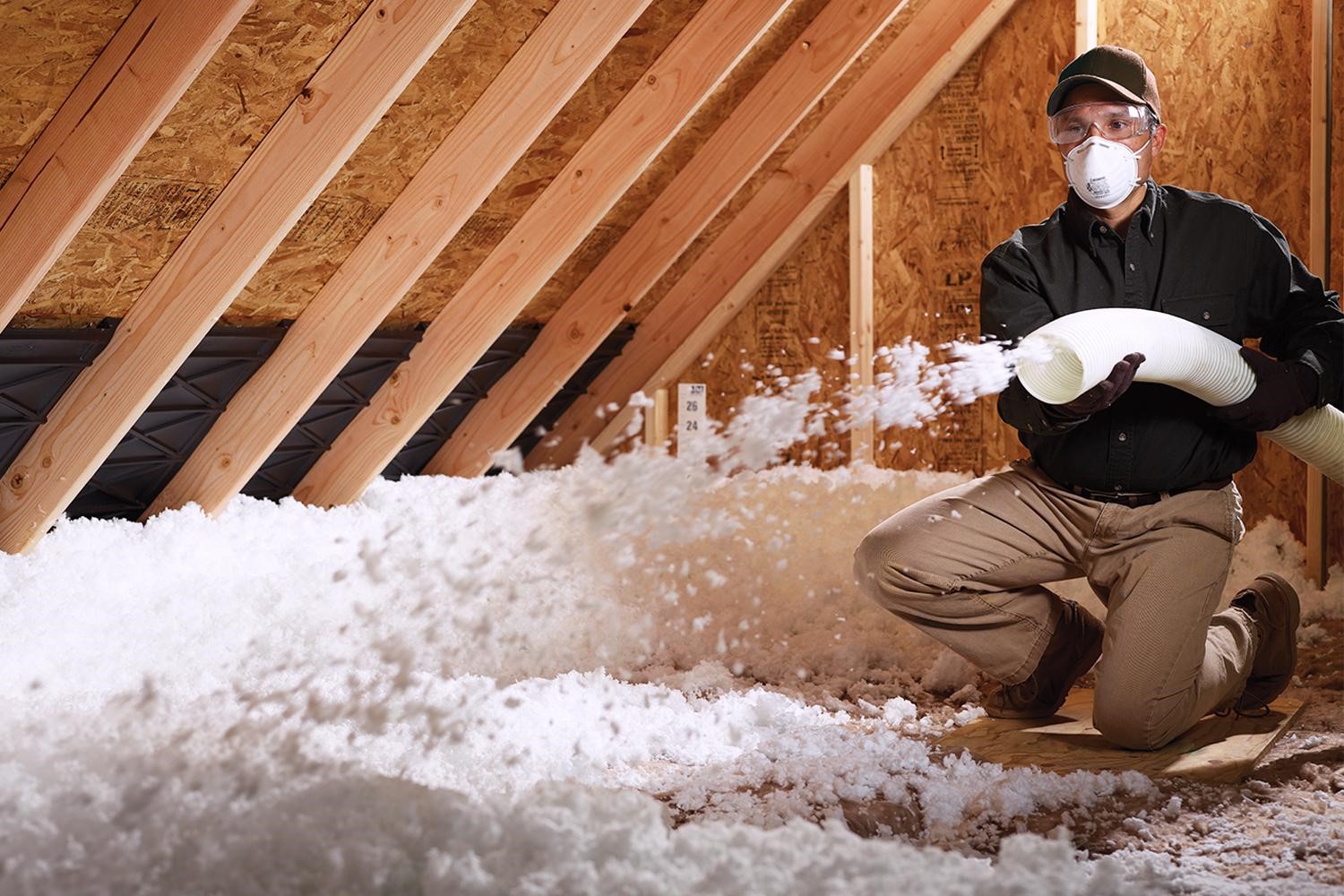Air that leaks through your home’s outer walls, doors, basements, and windows waste a lot of energy, increases your energy bills and can lead to an unhealthy indoor environment. If done properly, air sealing and insulation work hand in hand to reduce the risk of moisture-related mold and rot, boost indoor comfort by eliminating drafts, and reduce outside noise, among many more benefits. It is important to note that not all air leakage is bad. A home that is sealed too tightly can result in increased levels of carbon monoxide from combustion appliances, including furnaces, water heaters, and gas stoves, condensation/humidity issues, and stagnant air.
Air sealing stops air infiltration with caulk and expanding spray foam in hard-to-reach crevices and cracks most commonly found in attics, basements, and crawl spaces. The average home has enough cracks and gaps that, when not air sealed, is the equivalent of leaving a window open year-round.
Cost-Effective & Energy Efficient
Without an air seal, the insulation in your attic works like an air filter instead of the thermal barrier it is supposed to be. According to the U.S. Department of Energy, air infiltration can account for 30% or more on a home's heating and cooling cost. Not only does air leakage directly increase your monthly utility bill, it can also cause moisture problems which will slowly destroy the structural integrity of your home with mold and mildew.
Air Sealing by eco logic attic
We can increase the effectiveness of your home's insulation by stopping warm moist air from transferring through heated spaces into cold unconditioned attics and basements. Comfort can also reduce ice outside and drafts inside by sealing air leaks at the top of your interior and exterior walls, and in your basement around rim joints and plumbing chases.
With the frosty weather quickly descending it’s once again time to dust the cobwebs of the furnace and start prepping for another toasty winter inside your home. There are of course many different approaches that you can take to making your home more comfortable in the winter from caulking around window casings to wrapping your windows plastic, but air-sealing is especially effective. The end-result of air sealing affects your home’s building envelope by closing off all of the exposed cracks, holes and imperfections in your home’s interior to the exterior elements. This is typically done by using an expanding spray foam that fills and penetrates the gaps to eliminate air infiltration. The ENERGY STAR program estimates that the average home’s building envelope has enough of these minuscule holes and cracks that the square footage is equivalent to leaving a window open year-round (so that you can watch your money float away through it).
Where should air sealing be done?
Typically the basement around the rim joists and sill plate and in the attic around beams and other construction etc. represent the most high-value targets for air sealing but there are certainly any number of locations that can allow air leakage like canister lights. Take a look at the image below to see many these common areas.
How is air sealing done?
Air sealing is typically done by using a large canister filled with polyurethane that expands when it contacts the air. It is sprayed from the canister through a long metal hose to get into those hard to reach spaces in attics. Air sealing can be messy work and is typically not a project that is not recommended for a DIY’er, it usually involves getting far into crawl spaces and searching for the typical locations of cracks and crevasses and any that may be unique to the individual home. Work that is typically best left to a weatherization professional.
Don’t the air leaks in my home offer better circulation and ventilation?
It is worth mentioning that while air sealing your home is a good thing, it is also important to have proper air ventilation in your home to avoid mold growth and other byproducts of poorly circulated, unhealthy air. However effective air circulation is best done by having exhaust fans and attic vents do their job, not through air leakage. A properly sealed home should also have the appropriate ventilation to expel contaminated air and draw in fresh air.
When identifying air sealing problems in a house, there are usually three key areas where air leakage is the biggest problem:
- Attics: More air leaks out of the home through the attic than anywhere else. Warm air naturally rises, and attics are typically under-insulated and full of gaps and cracks. This allows the air you pay to heat to escape the house.
- Basements: When air leaks out of the house, it is usually replaced by air being sucked in on the lower levels of the home. By air sealing the basement, you can prevent an unwanted cold or humid air (depending on the season) from entering the home.
- Ducts: One of the most important sources of air leaks is actually the ductwork system. Leaky ducts allow conditioned air before it reaches its destination while also pulling in unconditioned air from the attic or basement, depending on where your ducts are. This means your furnace or AC unit has to run longer to get the air to the temperature you want.


